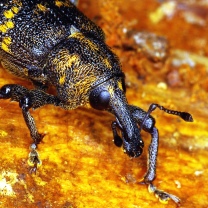The Science of Sound

Nowhere on planet Earth is totally quiet. Sounds constantly surround us and are part of our everyday lives – we often don't notice them and so may take them for granted. But how is it that certain sounds can affect our moods? Has the digital revolution led to the improved reproduction of sounds – or not? And why is it when 90% of the original data is missing in an MP3 sound track that we hardly notice a difference? These questions, and more, are explored in a new public lectures series, The Science of Sound, led by the University’s Department of Electronics.

Musical acoustics is taught to undergraduates in several departments. At one extreme, sound research in the Department of Electronics works to improve naturalness in electronically produced sounds thereby enriching our listening experience. At the other end, speech in a noisy environment can be made more intelligible, improving quality of life.
Virtual acoustic environment modelling is an expanding area which has particular application in the heritage industry. By developing an understanding of how sound works in a space, and how a listener hears that sound, researchers are able to recreate sounds within buildings that no longer exist – such as a ruined abbey, for instance – which helps to tell us more about how the buildings were constructed and used.

Sound research is also helping in unexpected ways. Insect larvae species in hard wood are being identified by the sound they make when eating – research that is of particular importance as the increase in global trade is leading to the introduction of non-native and invasive species into countries.
Many of the areas of research in the Department have more than one application, for example, interactive sonification is improving the detection of cervical cancer by rendering the microscope data from smear tests as sound; this allows the visual data on the microscope slide to be cross-checked to help to eliminate error. The same area of research is also working to improve the detection rates of hand-held landmine detectors by providing rich acoustic feedback to the human de-miner.
Interested in finding out more? Then come along to the lectures and get involved, or visit the Department of Electronics web page at www.elec.york.ac.uk.
Further information
